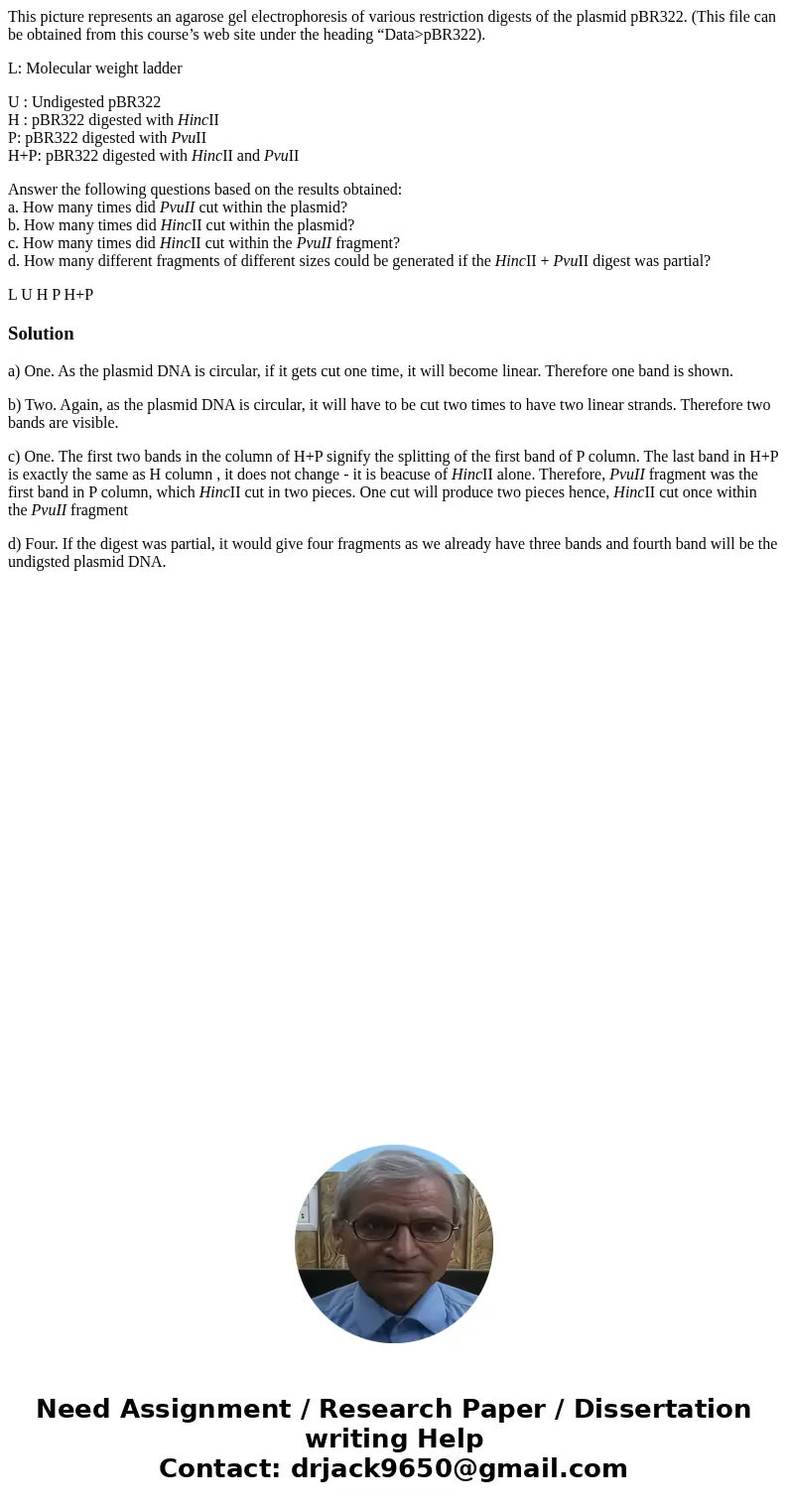This picture represents an agarose gel electrophoresis of va
This picture represents an agarose gel electrophoresis of various restriction digests of the plasmid pBR322. (This file can be obtained from this course’s web site under the heading “Data>pBR322).
L: Molecular weight ladder
U : Undigested pBR322
H : pBR322 digested with HincII
P: pBR322 digested with PvuII
H+P: pBR322 digested with HincII and PvuII
Answer the following questions based on the results obtained:
a. How many times did PvuII cut within the plasmid?
b. How many times did HincII cut within the plasmid?
c. How many times did HincII cut within the PvuII fragment?
d. How many different fragments of different sizes could be generated if the HincII + PvuII digest was partial?
Solution
a) One. As the plasmid DNA is circular, if it gets cut one time, it will become linear. Therefore one band is shown.
b) Two. Again, as the plasmid DNA is circular, it will have to be cut two times to have two linear strands. Therefore two bands are visible.
c) One. The first two bands in the column of H+P signify the splitting of the first band of P column. The last band in H+P is exactly the same as H column , it does not change - it is beacuse of HincII alone. Therefore, PvuII fragment was the first band in P column, which HincII cut in two pieces. One cut will produce two pieces hence, HincII cut once within the PvuII fragment
d) Four. If the digest was partial, it would give four fragments as we already have three bands and fourth band will be the undigsted plasmid DNA.

 Homework Sourse
Homework Sourse